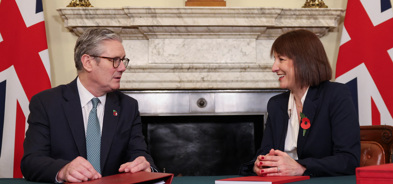The August Market Pulse
Tilney Group’s Chief Investment Officer Chris Godding discusses the macroeconomic ideas and research from July 2018.
The value of investments can fall as well as rise and that you may not get back the amount you originally invested.
Nothing in these briefings is intended to constitute advice or a recommendation and you should not take any investment decision based on their content.
Any opinions expressed may change or have already changed.
Written by Chris Godding
Published on 31 Aug 20188 minute read

Tilney Group’s Chief Investment Officer Chris Godding discusses the macroeconomic ideas and research from August 2018.
Somewhat appropriately for the time of year, the themes for August have been a hot earnings season in the US, a sizzling heatwave in Europe, an overheating economy in Turkey and trade tensions approaching boiling point. It has not been a quiet summer!
Earnings surprise
The second-quarter earnings season in the US is proving to be another positive event that nearly matched the exceptional first quarter. On aggregate, earnings in the US have been revised up by 5.5% and have recorded 25% growth year on year. Detractors would say that tax changes have made the comparison meaningless but sales also grew by nearly 10%, helped by a 23% gain in oil and a 30% gain in basic material company revenues.
In total, of the 482 companies in the S&P 500 which have reported, a staggering 403 or 84% have beaten analysts’ estimates this quarter, which is the highest proportion since 1988.
The UK’s FTSE 100 has also seen steadily increasing estimates over the last three months (see below chart) with the significant weightings in basic industry and energy being the main drivers of the trend.
Earnings Estimates Trend (2018)
The net result of the earnings gains in America is that even though US equities are up approximately 8% year to date, the valuation of the US equity market is about 4% cheaper today than at the beginning of the year.
On a similar basis, the FTSE 100 and the MSCI Asia Pacific Index are 13% cheaper than at the start of the year, illustrating that while earnings growth is positive, higher interest rates and investor sentiment have moderated the benefits significantly.
China versus US: the tariff debate continues
The isolationist and protectionist policy of the US administration is one source of uncertainty affecting markets, while trade tensions have increased markedly. Donald Trump’s determination to improve the position of the United States in the global supply chain – at the expense of the rest of the world – has made the US the market of choice for equity investors.
It has led to a stronger US dollar which, as discussed in previous editions of the Pulse, is a wet blanket on global growth. It has also led to uncertainty over capital investment decisions in countries that have historically benefited from globalisation.
Another 25% tariff on US$200 billion of exports from China to the US is due in early September and the Chinese authorities are considering their position. To date, the main foils have been a proportionate response on tariffs and a controlled devaluation of the renminbi. Investors now hope that the US and China reach a constructive compromise during September that triggers a further increase in equities.
In a no-compromise scenario, TS Lombard research suggests that a further 15% devaluation of the Chinese currency is required if the Chinese want to maintain GDP growth at current levels. TS Lombard also believes that tariffs have the potential to accelerate the long-term structural change in China’s balance of payments (exports minus imports) with the country moving to a trade deficit of approximately US$50 billion by mid-2019, unless the exchange rate or Chinese policy changes. Hence we are seeing positive investor reactions to news that China appears willing to open bilateral trade talks with the US.
Weaponising the currency is an option for Beijing, but a dangerous step, with far-reaching negative implications for neighbours in the Asia Pacific region as well as in Europe. It may also lead to capital flight, which has been well contained to date, despite a 9% fall against the US dollar since February.
President Trump knows he can only get a decent deal if the Chinese believe he will double down. Therefore, we believe the inflammatory rhetoric will continue until a deal is signed.
The US economy has been insulated so far from protectionism by the recovery in oil prices and the benefits of tax reform. JP Morgan estimates that while the tax cut may have added 0.3% to GDP, the principal driver of upward GDP revisions has been investment in the oil sector driven by higher oil prices. Neither of these drivers is likely to recur in 2019 and although both have created momentum the immunity of the US is probably illusory.
If the proposed trade tariffs come into effect in full, JP Morgan expects the US to be better off than the rest of the world. However, this means that US GDP growth will only lose between 0.5% and 0.7% of the current expected 2.4% growth in 2019.
The smart move for the president would be a trade deal that looks like a victory before the mid-terms because the longer-term ramifications remain overwhelmingly negative. Agreement would be a fillip for markets and a boost for the Republicans.
Food for thought
One of the downsides to the summer heat Europe has experienced is that poor crop yields are likely to drive food prices higher. Germany will be a net grain importer this year for the first time since 1986 with domestic output expected to fall 16% in 2018.
European Mill Wheat
While excluded from the core inflation data monitored by the European Central Bank (ECB), both food and energy have seen significant year-over-year increases that will impact consumers directly. Core inflation in Germany and France is already running above 2% and tighter labour markets mean that wage demands are likely to become bolder over time. Business leaders have also deferred capital spending due to concerns over both trade tariffs and Brexit while existing assets depreciate leading to cyclical inflation as capacity utilisation accelerates.
Higher commodity prices, tighter labour markets, a depletion of the capital stock and loose monetary policy from the ECB all add to the inflation risks in Europe and it will require extraordinary insight from the ECB to rebalance policy appropriately.
The structural imbalances in the euro area make this task even more challenging, with no singular strategy capable of balancing hot economies like Germany with those struggling to grow, such as heavily-indebted Italy. Germany’s Target 2 balance at the ECB is currently standing at a surplus of €976 billion while Italy and Spain are collectively €790 billion in deficit.
Without grass roots reform the heat is likely to increase for the single currency with the first test being the Italian budget discussion in September. The euro is sure to be tested further as the stresses increase.
Turkey
Turkey has been balancing on the brink of a debt crisis amidst a currency meltdown over the past few months, driven by political interference in financial controls of an overheating economy.
Inflation is running at over 15%, the Turkish lira is down 37% against the US dollar and local currency government bonds yield 25%. The good news is that Turkey is only 1% of global GDP and Oxford Economics is of the view that it is not large enough to be a systematic risk to either European or global growth.
However, there are specific contagion risks through the European banking system. These risks are particularly significant in the private sector where BBVA, BNP Paribas and UniCredit are owed just under €140 billion by Turkish borrowers.
The Turkish state is not in a position to help with US$9.4 billion of foreign exchange (FX) reserves to support the currency and elevated short-term financing needs to worry about. According to Oxford Economics, the European bank reserves on the private sector loans should be adequate to cover losses but the hit to their profitability would be sizeable and unwelcome.
While European banks as a whole have approximately €2.5 trillion of capital, they have been struggling with negative interest rates, excessive non-performing loans, inadequate provisions and powerful competition from US rivals. The exposure to Turkey is perfectly manageable, but it is still likely to lead to tighter credit conditions in the weaker economies of the Eurozone such as Italy and Spain, which may further deepen the imbalances discussed above.
Turkey in Turmoil
A Pavlovian response by investors this year has been to link the sell-off in emerging markets (EMs) to the strength of the US dollar. To some extent, tighter dollar finance conditions have indeed been a drag and Macro Strategy Partners estimates that the world supply of US dollars is down by around 3% since the start of the year. However, it is the Trump trade tariff proposals that have done the real damage.
A US dollar supply issue?
US dollar supply in emerging market countries is less critical today because the structure of financing across the EMs has changed materially. Since the Asia currency crisis of 1998, internal financing has replaced much of the dollar-denominated debt and diversification of funding limits the contagion risks.
Differentiation within the individual markets in EMs is more important than in the past and the common threads that link Turkey, Argentina, South Africa and Brazil are internal mismanagement, material twin deficits (fiscal and current account), limited FX reserves and politics. Unfortunately however, most other emerging markets are tarred with the same brush.
While the strength of the US dollar has hurt, EM problems are generally more associated by trade. The evolution of trade discussions between China and the US is therefore key to EM equity market performance for the remainder of the year and if a reasonable compromise is reached, the appreciation of the dollar will stall and non-US growth expectations will rebound.
The Asia Pacific region now makes up 73% of the MSCI World EM benchmark, which means that for EMs to perform, Asia Pacific must perform and by default, that depends on China. Easing monetary and fiscal policy in China means that Chinese property prices are indeed already recovering, electricity production is picking up, corporate profits are rebounding and the Shibor rate is down 200bps from the high.
Shanghai Stock Exchange Composite Index
Our position on EM equities is currently neutral in the face of the continued political uncertainties, but when a market is down 25% from the high, like the China Shanghai Composite was in August, it’s probably fair to say that a lot of bad news is in the price. However, we are not moving to overweight the region yet since trade negotiations are crucial to realising the potential and the outcome of those remains uncertain.
For more information or if you have any questions, please get in touch by calling 020 7189 2400 or emailing contact@tilney.co.uk.
Get insights and events via email
Receive the latest updates straight to your inbox.
You may also like…


Market news
2024 Autumn Budget Overview: The key announcements from Chancellor Rachel Reeves




